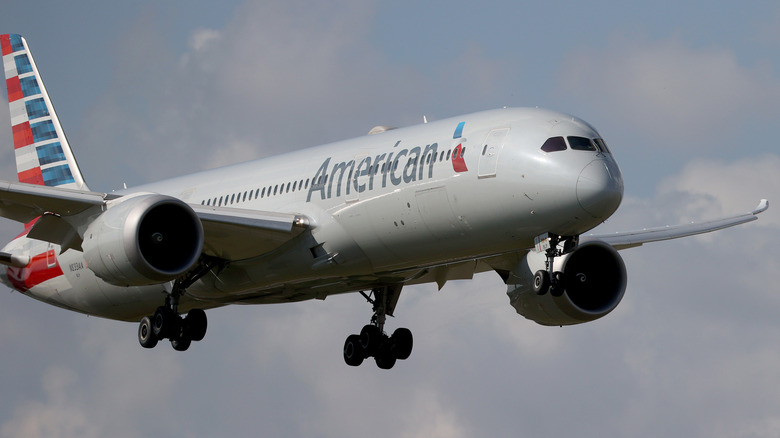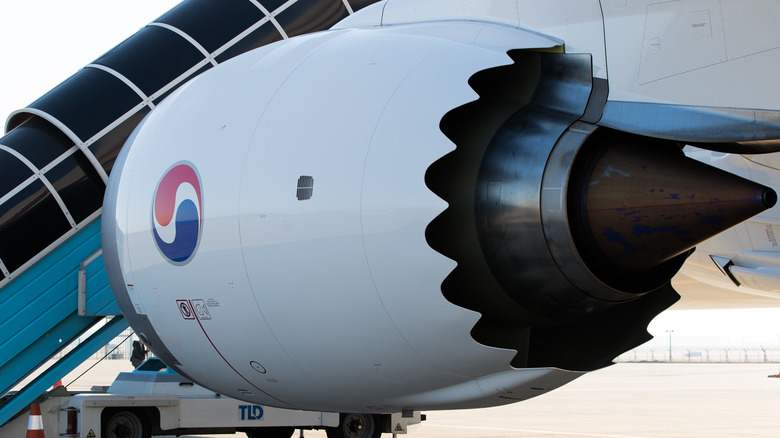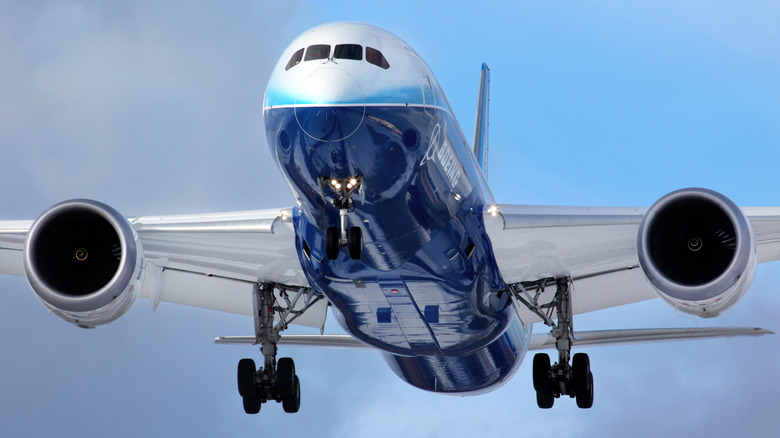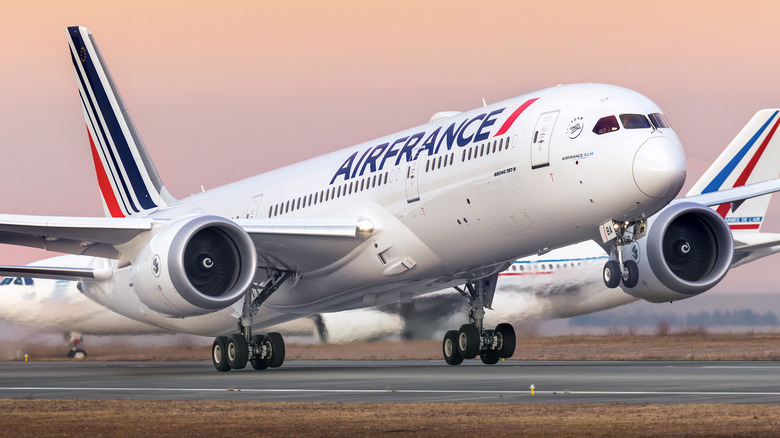What Makes The Boeing 787 Dreamliner Jet Unique From Other Passenger Jets
Boeing has several different varieties of aircrafts in its 7X7 series, with the 737 being the most produced commercial aircraft still currently in production (although the recent 737 MAX has put the company in major hot water). This naming tradition goes all the way back to the 707 from the late 1950s and has continued through the company's most recent addition to the line, the 787 Dreamliner that was introduced in 2009 and began passenger service in 2011. One might assume that when Boeing makes each new aircraft in this line that the larger the number means the bigger the plane is. That was true for awhile, but the 787 Dreamliner — which began service in the United States in 2012 — breaks that tradition, as it is considerably smaller that the previous 777 model.
So, if its size is not what sets the 787 Dreamliner apart from the previous Boeing models, what does? Mostly, it comes down to technological and design advancements to make the experience of flying much better for both the passengers and the flight crew. Not only do these advancements decrease some of the headaches that can come with flying, but they also make for more efficient flights as well.
Noise-reducing engines
One of the more frustrating parts of flying on an airplane is how noisy it is. There could be zero noises being made inside the cabin by the passengers and crew, yet there is this irritating, constant hum that even some headphones can't drown out. This is thanks to the engines blasting on the outside of the plane. However, if you find yourself on board a Boeing 787, you may notice that the hum is far quieter than you are used to on other aircrafts. This is due to a chevron design that can be found on the back end of the engine.
That sound comes from the hot air of the engine coming into contact with the cool air from the fan. You are hearing the choppiness of that mixture, and with this chevron design at the exhaust, it is able to blend the two different airs together more seamlessly, which cuts down the sound by a good margin. Boeing also uses this chevron design on the 747-8 models as well, which also include chevrons on the inner core and not just the outer fans, called the nacelles. These aren't going to make the engines completely silent, but that noise will be far less noticeable on a Boeing 787. Perhaps now you don't need to worry so much about having noise-canceling headphones when you fly.
Making altitude more comfortable
Have you ever gotten off of a long flight and just felt absolutely exhausted? This is not just because a day of travel takes a lot of energy. When you are at a higher altitude, the dryer and less oxygen-dense the air becomes. Airlines have done their best to simulate some sort of atmospheric consistency from the ground to the skies, but at some point, the actuality of the altitude can catch up with you, particularly if you are not properly hydrating.
On a Boeing 787, this phenomenon has been handled much better. These planes use an air purification system developed by Donaldson Filtration Solutions that pumps a higher quality of air into the cabin, removing things like allergens and bacteria that other systems aren't as great at keeping out of the cabin. As for the humidity, this is achieved because the aircrafts are primarily made of a carbon fiber composite that better keeps in the moisture without corroding the plane over time. Through these elements, it makes the altitude feel far closer to ground level than you actually are, cutting down on your fatigue during a flight.
An increase in efficiency
Along with the comfort that the carbon fiber composite that makes up most of what the aircraft is made out of, Boeing also designed the 787 planes this way in an effort to be more environmentally conscious. This also goes for the fuel efficiency for these aircrafts. According to the International Council on Clean Transportation, carbon dioxide emissions from commercial aircrafts accounts for 2.4% of global CO2 emissions. That may seem like a small number, but that doesn't even take into consideration the manufacturing of airplanes or them emitting other harmful compounds as well.
When it comes to the Boeing 787, this new composite material that it was made out of — along with its advanced engines — allows the Dreamliner to be a significantly more fuel efficient aircraft, averaging 20% less fuel consumption per passenger compared to previous Boeing planes of a similar size. This makes it a great choice for long haul flights, as the footprint left by that flight would be considerably larger if it wasn't the 787. Plus, this design means that the cost of maintaining and operating these aircrafts is lower as well.
So, the Boeing 787 isn't just a more comfortable plane. It's a more efficient one as well.



